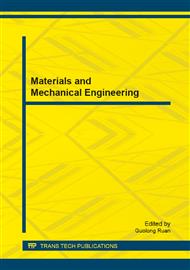p.323
p.328
p.334
p.339
p.346
p.353
p.359
p.364
p.371
Determination of Energy Storage Capacity for a Hybrid Renewable Power Generation System
Abstract:
Using renewable resources, such as solar and wind energy for generation presents technical challenges in producing continuous and controllable power. Since it is difficult to predict and control the output of the renewable resources, an extra Energy Storage System (ESS) is needed to enable a proper management of the uncertain power production. The ESS acts like an energy buffer such that the renewable output power can be regulated to suit the operational requirements of the network. To reduce the capital investment for the storage devices, it is important to estimate reasonable storage capacities. This report proposes an integration of solar and wind energy to form a hybrid power generation system. The goal is to reduce the capacity of the ESS so as to maximize the economic benefit that can be obtained from energy captured from the hybrid renewable sources. In the project, the studied hybrid solar-wind power system is compared with a solar power system and a wind power system. Results show that the proposed hybrid scheme is feasible to reduce the ESS capacity, by taking advantage of the complementary nature of solar vs. wind generation.
Info:
Periodical:
Pages:
371-379
Citation:
Online since:
February 2014
Authors:
Keywords:
Price:
Сopyright:
© 2014 Trans Tech Publications Ltd. All Rights Reserved
Share:
Citation:


